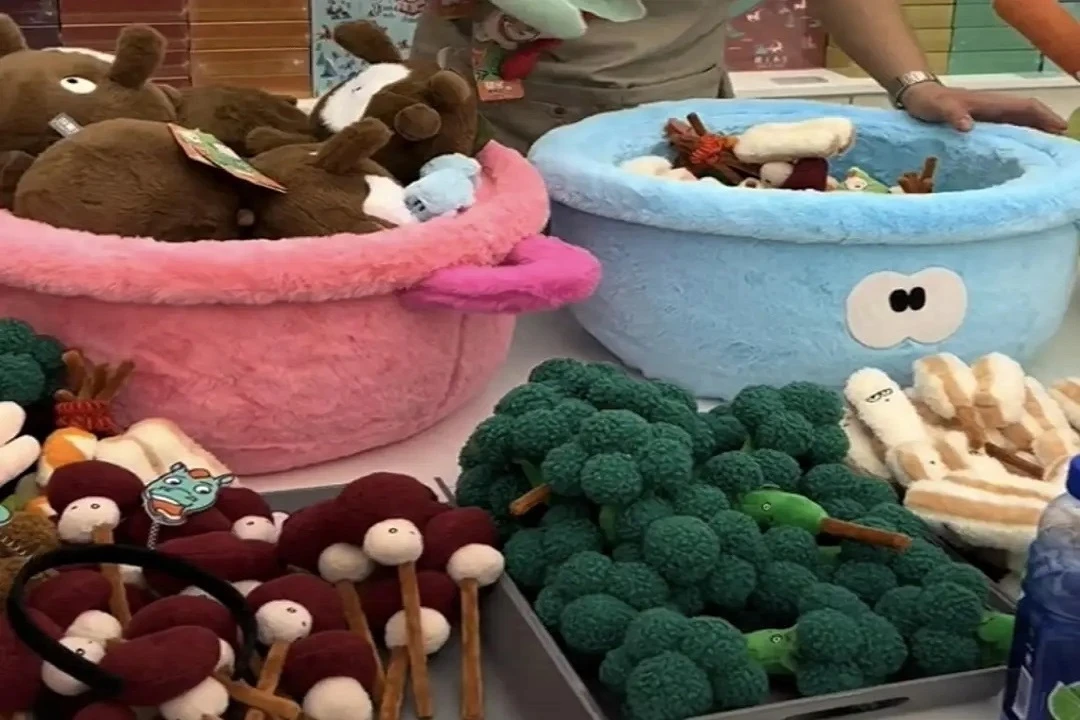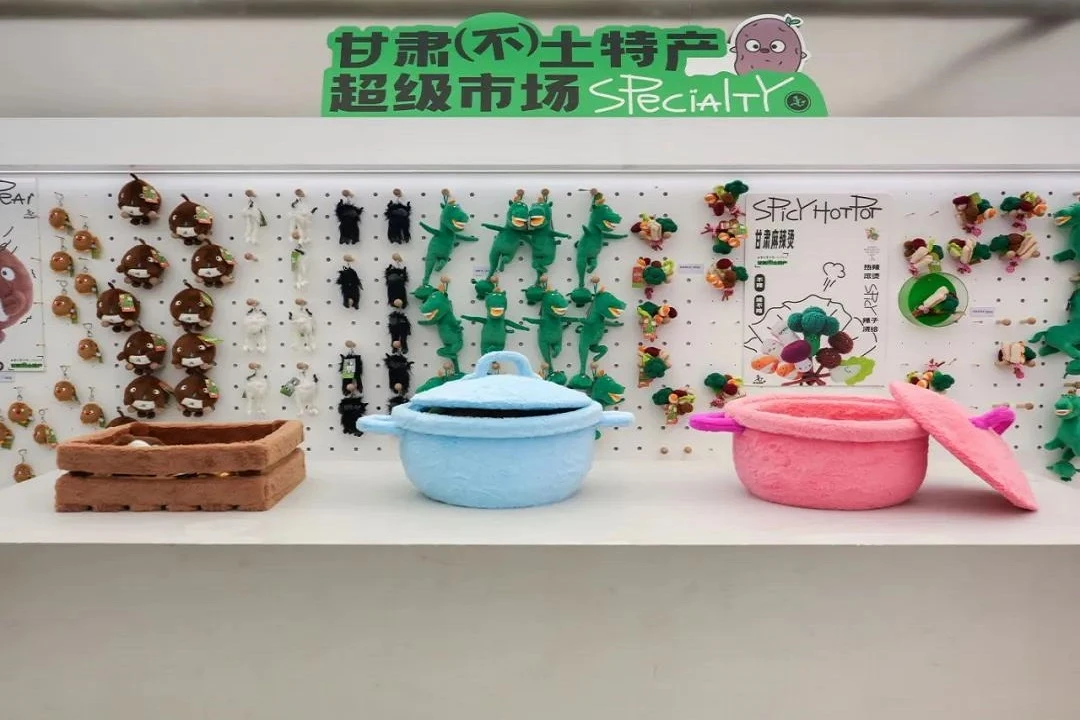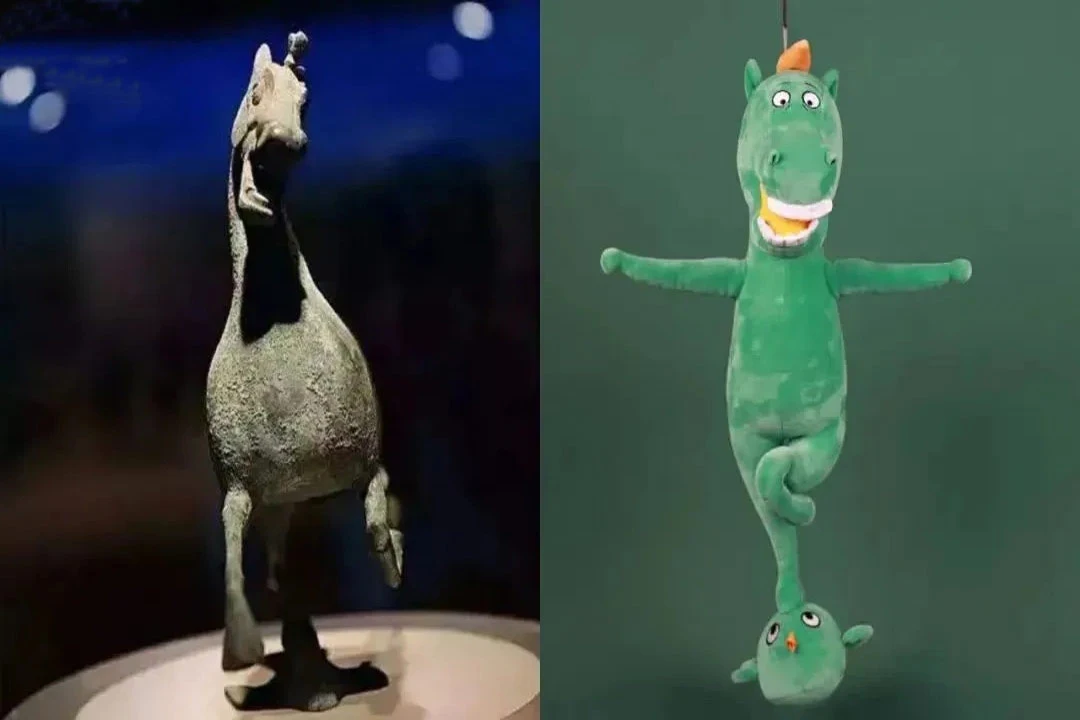Recently, Gansu Provincial Museum has gained widespread attention on social media, not for a new historical exhibit, but for its innovative cultural merchandise: "spicy hotpot" plush bouquets. This creative venture follows the popularity of their "Bronze Galloping Horse" plush toy, adding a new flavor—literally and figuratively—to their collection.
The "spicy hotpot" plush bouquets are modeled after Tianshui spicy hotpot, a local delicacy from Gansu. The set includes six plush items representing various hotpot ingredients such as meatballs, crab sticks, rice cakes, and mushrooms. These plush toys are available in four spice levels: non-spicy, mild, medium, and tongue-numbing. To add to the fun, the collection process mimics an actual hotpot experience, where customers choose their "ingredients," interact with staff about their spice preferences, receive a special "sauce," and then watch as their order is "cooked."

A Cultural Connection through Play
The museum's head of cultural creativity explains that the "spicy hotpot" series is part of the "Gansu Local Specialty" IP, aiming to blend local cultural elements with playful designs. This new line of plush toys has quickly become a hit among visitors, resonating with people's fondness for local delicacies and the whimsical charm of plush toys.
One of the most endearing aspects of purchasing these plush toys is the interactive process. After selecting their plush hotpot ingredients, customers engage in a playful dialogue with museum staff, who pretend to prepare the hotpot, adding a layer of storytelling to the experience. This imaginative interaction has been praised for its nostalgic "playing house" feel, appealing to both children and adults.
Local Gansu resident Ms. Zhao expressed her joy in seeing her hometown's unique features so creatively incorporated into the plush toys. For her, these toys are more than mere souvenirs—they are a medium for promoting Gansu culture. Similarly, university student Wang shared how the plush toys provided not just a keepsake but also emotional value, blending childhood playfulness with cultural appreciation.
From Bronze Horse to Spicy Hotpot
This is not the first time Gansu Provincial Museum's cultural merchandise has made waves. In 2022, their "Bronze Galloping Horse" plush toy became a sensation. This toy, modeled after an Eastern Han dynasty bronze artifact, captured hearts with its quirky, toothy grin and spread-eagle wings, symbolizing the spirited essence of the original artifact. The online and offline sales skyrocketed, demonstrating the museum's ability to merge historical reverence with contemporary humor.
The "Bronze Galloping Horse (铜奔马)," also known as the "Flying Horse of Gansu," is a national treasure. Unearthed in 1969 from the Leitai Han Tomb in Wuwei, Gansu Province, this artifact stands at 34.5 cm tall, 45 cm long, and 13.1 cm wide, weighing 7.3 kg. The dynamic pose of the horse, seemingly galloping with one hoof on a flying swallow, epitomizes the vigorous spirit and heroic ambition of the Chinese nation. When the plush toy version became a hit, it was hailed for bringing the cultural significance of the artifact closer to the public, blending solemnity with a touch of humor.
Innovative Merchandising: Blending Culture and Play
Gansu Provincial Museum's approach to cultural merchandising reflects a broader trend among museums to engage with visitors through innovative and playful products. Museums like the Palace Museum in Beijing, the National Museum of China, and the Shanghai Museum have all embraced this trend, turning their cultural artifacts into appealing merchandise. These products not only serve as souvenirs but also help demystify historical knowledge and make cultural heritage more accessible and relatable.
The popularity of the "spicy hotpot" plush toys is a testament to the effectiveness of this approach. By infusing local cultural elements into their merchandise, Gansu Provincial Museum has created products that resonate deeply with both locals and tourists. This initiative encourages visitors to take a piece of Gansu's rich cultural tapestry home with them, fostering a deeper appreciation for the region's heritage.
The Role of Technology in Enhancing Visitor Experience
Looking ahead, technology will play a significant role in enhancing the visitor experience at museums like Gansu Provincial Museum. Augmented reality (AR) and virtual reality (VR) can provide immersive experiences, allowing visitors to interact with historical artifacts in new and exciting ways. Imagine using an AR app to see the "Bronze Galloping Horse" come to life or to explore a virtual hotpot kitchen where each ingredient tells its own story.
Additionally, social media continues to be a powerful tool for museums to connect with their audiences. The viral success of the "spicy hotpot" plush toys was largely driven by social media platforms, where users shared their experiences and enthusiasm. By leveraging these platforms, museums can engage with a global audience, promoting their cultural heritage far beyond their physical locations.
Community Engagement and Cultural Pride
The innovative merchandising strategies of Gansu Provincial Museum also emphasize the importance of community engagement. By involving local cultural elements in their products, the museum fosters a sense of pride and connection among the local population. This approach not only attracts tourists but also encourages locals to engage with their cultural heritage in meaningful ways.
Educational programs and workshops centered around these products can further enhance this engagement. For example, the museum could host workshops where visitors learn about the history and cultural significance of Tianshui spicy hotpot while creating their own plush ingredients. Such interactive experiences deepen the connection between visitors and the cultural stories being told.
A Sustainable Future for Cultural Merchandising
As museums continue to innovate in their merchandising strategies, sustainability remains a key consideration. Creating products that are not only culturally significant but also environmentally friendly is essential. This includes using sustainable materials, reducing waste in the production process, and promoting products that encourage responsible consumption.
Gansu Provincial Museum's approach sets a positive example in this regard. By focusing on products that are both meaningful and durable, the museum ensures that its merchandise has a lasting impact. This commitment to sustainability is an important aspect of preserving cultural heritage for future generations.


